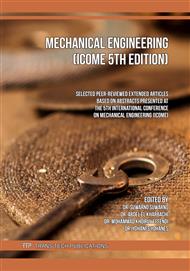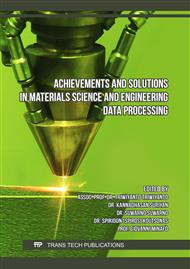p.15
p.23
p.35
p.45
p.53
p.59
p.69
p.79
p.89
Experimental of the Influence of Blade Pitch Angle Cooler Fan on the Performance of Closed Cooling Water System Gas Turbine
Abstract:
A closed cooling water system is one of the systems contained in gas turbines. The main function of this system is to cool the lubricating oil and winding generator. Decreased performance of closed cooling water system can cause the gas turbine protection system to be active and cause the gas turbine trip. The study began with data collection, both design data for the heat exchanger cooler fan and operating data from the closed cooling water system on the gas turbine. An experiment was carried out by varying the blade pitch angle cooler fan to measure the work parameters in the field and analyzing the results of these measurements against the performance of the heat exchanger cooler fan. Variations of blade pitch angle cooler fan were done by limiting the working parameters of the cooling fan motor. The result of this study was an increase in the blade pitch angle cooler fan results in an increase in the flow rate of the cooler fan, this also affected the heat transfer rate of the heat exchanger cooler fan which grew when the blade pitch angle cooler fan was raised. The increase of blade pitch angle cooler fan also resulted in a decrease in the temperature of closed cooling water on the heat exchanger cooler fan outlet.
Info:
Periodical:
Pages:
53-58
Citation:
Online since:
March 2023
Authors:
Keywords:
Price:
Сopyright:
© 2023 Trans Tech Publications Ltd. All Rights Reserved
Share:
Citation:



